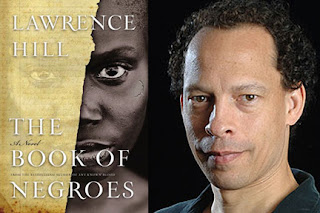 Similar to crashing the net on a fore-check, feminists have been battling for the development of women’s hockey since it originated in 1892. These ‘hockey feminists’ have come a long way since the first women’s game held in Barrie, Ont. yet they continue to fight for equality in comparison to men’s hockey leagues.
Similar to crashing the net on a fore-check, feminists have been battling for the development of women’s hockey since it originated in 1892. These ‘hockey feminists’ have come a long way since the first women’s game held in Barrie, Ont. yet they continue to fight for equality in comparison to men’s hockey leagues. After the first girl’s game of hockey in 1892, there was a slow development of the game until the 1920s and 1930s where the first era of women’s hockey arose. Leagues, teams and tournaments came to surface in almost every region of Canada and even some places in the United States. In Canada, the best teams met in an East-West tournament to declare a national champion. This was a good stepping stone for women’s hockey as it transformed women’s hockey from a game to a sport full of passion and competition. Although there was progress being made, hockey was still seen as a man’s sport and was
in great need of a female hero to speed up the process of transforming the game.
In the 1950s, a new feminist appeared to challenge people’s outlook on the
sport. Abby Hoffman, a nine year old who had already been skating for six years,
was faced with a dilemma. Hoffman wanted to play hockey competitively but there were
no leagues that allowed girls to play in her area. For Hoffman and her parents, this was a
minor issue that could be taken care of. Suiting up in her equipment at home and keeping
her hair short, Hoffman disguised herself as a boy and competed with boys on the St.
Catherines male hockey team. She was selected to play for an all-star charity game but
when she was forced to give her birth certificate her secret came to light and was unable
to compete due to her revealed gender. This issue was taken to the Ontario Supreme
Court of Justice where Hoffman and her parent’s challenged the ‘boy’s only’ policy in
minor hockey. The court decided to shoot down Hoffman’s request to compete with male
hockey players. Seen as a tragic ending at the time, this story is now an inspiration to
many female hockey players along with feminist’s in general and is yet another building
block to the development of women’s hockey.
Hoffman’s courage advanced the growth of women’s hockey as it motivated other
girl hockey player’s to challenge the policy even into the 60s. The girls were still being
rejected but by the 1980s university hockey teams were formed for not only males but
females too. The N.C.A.A. finally recognized the game in 1993.
In the 1990s, women’s hockey grew to a whole new level where eight countries
competed in the World Championship. All this demand for women’s hockey leagues led
to the biggest impact in the growth of the game people have ever seen in history. In 1998,
women’s hockey became a sport in the Olympics held in Japan. The tournament consisted
of six teams; Canada, U.S.A., Finland, China, Sweden and Japan. This event is
acknowledged for having the greatest impact on making young female athletes aware that
hockey is not only for men, but for woman too. Two years after the becoming of this
Olympic sport, the United States saw a 50 per cent increase in the number of girls
registering in hockey leagues. From 1990-2000, Canada saw a 300 per cent increase. The
Olympics are recognized for the great change in participation of females in the game.
Today, female hockey leagues are at an all time high and mixed gender teams are
a lot more common specifically when looking at younger ages. Hockey is also starting to
see some female icon’s in the game today. Goaltender’s, Manon Rheaume and Erin
Whitten played professional hockey in the men’s minor level. The ‘Wayne Gretzky’ of
women’s hockey Hayley Wickenheiser joined Salumut of the Finish Second Division and
became the first woman to record a point in men’s professional hockey. Michelle Anger,
a Laurier student and one of few female hockey players in Laurier’s intramural league
claims that “women’s hockey is growing rapidly and it’s undeniable. I saw Hayley
Wickenheiser on a cereal commercial about a year ago. She’s an inspiration.”
more up and coming idols, feminists have come a long way since women’s hockey first
originated. Every day more and more girls are inspired to play hockey and grow the
courage to compete with male’s but the women’s hockey still isn’t respected as equally
as it is for men. Dr. Katherine Spring, a speaker at the F-Word Forum, raised the
question, “ Why are males called ‘The Golden Hawks’ and females are labelled as ‘The
Lady Hawks?’” Feminists are keeping a positive attitude about their progress with hopes
to reach their goal of one day making men’s hockey and women’s hockey equal sports.


